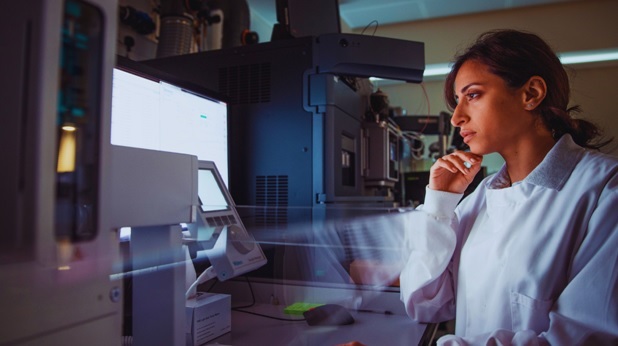Chromatography in Biotechnology — Precision for Reliable Results
9th Sep 2024

Chromatography might sound complex, but it's really just a powerful way to separate and identify what's in the mix. Whether we're purifying proteins or spotting nucleic acids and fats, this technique is a game-changer in biotechnology.
If you've worked in a lab or research environment, you're probably no stranger to high-performance liquid chromatography (HPLC), gas chromatography machines, or liquid chromatography. But today, let's dive deeper into how these techniques make a difference in biotechnology—and how our products can streamline your processes.
What Exactly Is Chromatography?
Chromatography is our go-to for separating, identifying, and isolating mixture components—a must-have for both detailed and quick analysis. In biotech, it’s how we sort proteins based on their size, shape, charge, and even how they interact with water. The four primary separation techniques include:
- Ion exchange
- Surface adsorption
- Partition
- Size exclusion
Each of these techniques serves a specific purpose in the lab, allowing us to analyze complex samples with accuracy. Chromatography isn't just limited to column methods; thin-layer and paper chromatography are also common in biotech applications.
Gas Liquid Chromatography in Biotechnology
Gas-liquid chromatography (GLC) is another essential method in the biotech toolkit. It involves a gaseous mobile phase—typically an inert gas like helium or nitrogen—and a liquid stationary phase.
This method is highly sensitive and excels at separating very minute molecules. GLC can be used to test the purity of substances, separate compounds in mixtures, and even prepare novel compounds for further research.
When using gas chromatography, precision is key. That’s where our Agilent 6890N FID Gas Chromatograph comes in.
With its advanced electronic pneumatic control (EPC) modules and high-performance temperature control, the Agilent 6890N ensures precise gas-liquid separations. Whether you're breaking down hydrocarbons or isolating proteins, this gas chromatography machine gets the job done with top-notch performance.
Why Choose the Agilent 6890N?
- Advanced EPC modules for optimized use
- Precise temperature control for accurate results
- Exceptional retention time repeatability
The key to its success? The combination of pneumatic control and temperature accuracy, which leads to consistent and reliable results, crucial for chromatography in biotechnology.
High-Performance Liquid Chromatography (HPLC)
HPLC is another workhorse in biotechnology labs. This technique is perfect for quickly sorting and identifying molecules like amino acids, lipids, and proteins. HPLC is all about speed—mobile phases move through columns under high pressure, enabling rapid analysis and separation.
The Agilent 1100 HPLC System with DAD Detector and Computer is designed to keep your lab running smoothly. With efficient mixing, pulse-free solvent delivery, and fast, accurate results, it’s a real workhorse.
Need to troubleshoot? The built-in diagnostics and data software have you covered—on-site or remotely. Everything you need for top-notch chromatography, all in one reliable system.
What Sets the Agilent 1100 HPLC System Apart?
- Efficient mixing and pulse-free solvent delivery
- Fast, accurate results
- Extensive diagnostics with data analysis software for quick troubleshooting
Applications of Chromatography in Biotechnology
Chromatography is more than just a lab technique; it's a gateway to groundbreaking discoveries in biotechnology. Here are some key applications where chromatography truly shines:
- Protein Purification: Chromatography is key for isolating proteins in biopharmaceuticals, sorting them by size, charge, and hydrophobicity—because not all proteins are created equal!
- Analyzing Nucleic Acids: The separation of DNA and RNA components is critical for many genetic and forensic studies.
- Metabolite Analysis: Need to map out metabolic pathways? Chromatography pinpoints and quantifies metabolites in biological samples like a pro.
- Drug Development: HPLC is key in drug formulation, making sure the active ingredients are spot-on and ready to go.
Chromatography isn't just for labs—it’s a go-to in the petroleum industry for separating hydrocarbons and in biochemistry for sorting out biological compounds. Its versatility is what makes it a real all-rounder in so many fields.
To help you quickly grasp the benefits of chromatography in biotechnology, here’s a concise list of key takeaways:
- Ion Exchange Chromatography: Separates proteins based on their charge.
- Size Exclusion Chromatography: Isolates proteins based on their size, crucial for studying molecular weight and size distribution.
- Gas Chromatography (GC): Perfect for separating very minute molecules in volatile substances.
- High-Performance Liquid Chromatography (HPLC): Ideal for rapid separation and identification of amino acids, proteins, and nucleic acids.
And when it comes to equipment, here’s why our offerings stand out:
- Agilent 6890N Network Gas Chromatograph: Provides exceptional retention time repeatability, essential for accurate chromatographic measurements.
- Agilent 1100 HPLC System: Guarantees fast and accurate results with efficient mixing and solvent delivery.
Chromatography might seem technical, but once you get into the groove of using the right equipment and techniques, it becomes second nature. Whether you’re purifying proteins for drug development or separating hydrocarbons in the petroleum industry, the right chromatography setup makes all the difference.
Investing in Chromatography for the Future of Biotechnology
Whether you’re using high-performance liquid chromatography, gas-liquid chromatography, or a traditional liquid chromatography setup, the technology behind it is what drives innovation in your lab. Investing in quality equipment like the Agilent 6890N Network Gas Chromatograph or the Agilent 1100 HPLC System ensures that your results are accurate, reliable, and consistent—because, in science, precision is everything.
